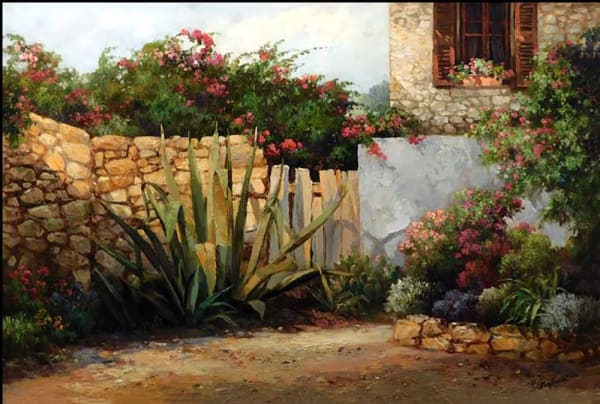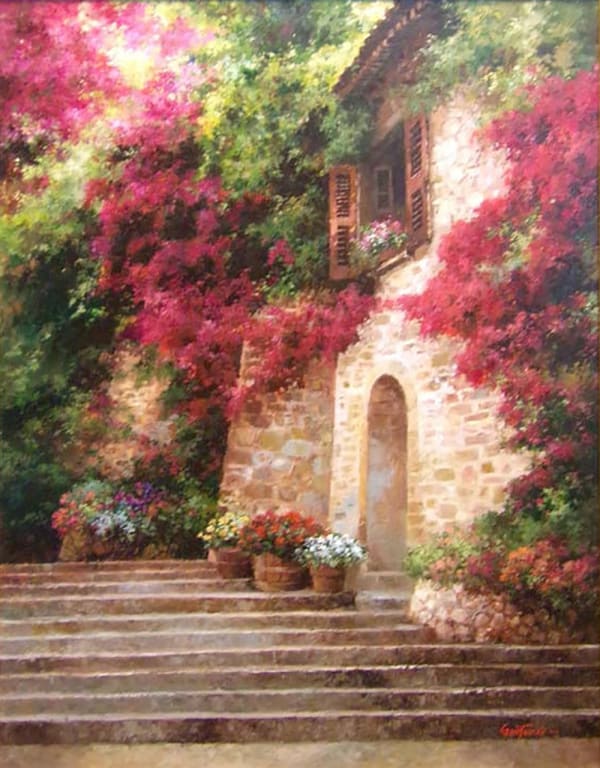Paul Guy Gantner
-
 Paul Guy GantnerAll Around the Blooming Heather43 1/2 x 55Oil
Paul Guy GantnerAll Around the Blooming Heather43 1/2 x 55Oil -
 Paul Guy GantnerAmong the Wildflowers43x55Oil
Paul Guy GantnerAmong the Wildflowers43x55Oil -
 Paul Guy GantnerAn Invitation40x30Oil
Paul Guy GantnerAn Invitation40x30Oil -
 Paul Guy GantnerCityscape48x24Oil
Paul Guy GantnerCityscape48x24Oil -
 Paul Guy GantnerCrimson Tracks24x36Oil
Paul Guy GantnerCrimson Tracks24x36Oil -
 Paul Guy GantnerEthereal Morning48x36Oil
Paul Guy GantnerEthereal Morning48x36Oil -
 Paul Guy GantnerFleurs de Beaute40x30Oil
Paul Guy GantnerFleurs de Beaute40x30Oil -
 Paul Guy GantnerFountain30x40Oil
Paul Guy GantnerFountain30x40Oil -
 Paul Guy GantnerGarden Boulevard40x30Oil
Paul Guy GantnerGarden Boulevard40x30Oil -
 Paul Guy GantnerGarden of Solace24x36Oil
Paul Guy GantnerGarden of Solace24x36Oil -
 Paul Guy GantnerGiardino de Flore40x30Oil
Paul Guy GantnerGiardino de Flore40x30Oil -
 Paul Guy GantnerLighting the Way43x55Oil
Paul Guy GantnerLighting the Way43x55Oil -
 Paul Guy GantnerMorning Walk in Antibes40x30Oil
Paul Guy GantnerMorning Walk in Antibes40x30Oil -
 Paul Guy GantnerNature's Elegance60x40Oil
Paul Guy GantnerNature's Elegance60x40Oil -
 Paul Guy GantnerPath into the Woods36x48Oil
Paul Guy GantnerPath into the Woods36x48Oil -
 Paul Guy GantnerPoppy Fields30x40Oil
Paul Guy GantnerPoppy Fields30x40Oil -
 Paul Guy GantnerPoppy Fields of Tuscany 46x3646x36Oil
Paul Guy GantnerPoppy Fields of Tuscany 46x3646x36Oil -
 Paul Guy GantnerTower40x30Oil
Paul Guy GantnerTower40x30Oil -
 Paul Guy GantnerTranscendent Morning40x52Oil
Paul Guy GantnerTranscendent Morning40x52Oil -
 Paul Guy GantnerTrees30x40Oil
Paul Guy GantnerTrees30x40Oil -
 Paul Guy GantnerUntitled30x40Oil
Paul Guy GantnerUntitled30x40Oil -
 Paul Guy GantnerView Across the Meadow43x55Original Oil
Paul Guy GantnerView Across the Meadow43x55Original Oil
Gantner was born in 1948 in Seoul, South Korea. He was instantaneously attracted to color and form. By the age of 12 he was attempting to recreate his universe through the medium of paint. Gantner is primarily a self-taught artist. His passion for the Impressionists and the Post-Impressionists was responsible for his move to France. This allowed him to freely study their work and to explore their universe. The majority of Gantner's paintings are set in Provence and the Midi. The artist's fascination with quaint mountain villages with their narrow, winding streets becomes a perfect vehicle for the true subject of his work's solitude. Gantner's paintings are visual records of absence. This theme is reinforced through the artist's use of confined luminous and shadowed spaces that are defined and contained by vertical walls of stone. Even when the painting is not of a narrow village street, solitude and absence are still present. Trained in the Impressionist vein, Gantner has resolved the age-old Poussiniste-Rubeniste conflict by combining the strengths and qualities of line with color. This is apparent in Gantner's return to Giverny to repaint Monet's Japanese bridge and waterlilies. The spontaneous quality that defined the impressionism of Monet has given way to a painted drawing that is a controlled application of color structured within a strong linear composition.






















